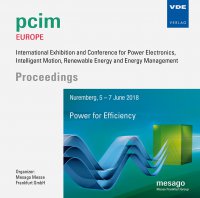Feasibility of Copper-Based Ribbon Bonding as an Assembly Method for Advanced Power Modules
Konferenz: PCIM Europe 2018 - International Exhibition and Conference for Power Electronics, Intelligent Motion, Renewable Energy and Energy Management
05.06.2018 - 07.06.2018 in Nürnberg, Deutschland
Tagungsband: PCIM Europe 2018
Seiten: 8Sprache: EnglischTyp: PDF
Persönliche VDE-Mitglieder erhalten auf diesen Artikel 10% Rabatt
Autoren:
Behrendt, Stefan; Eisele, Ronald; Andersen, Katja (R&D-Center „University of Applied Sciences Kiel“ GmbH, Germany)
Xu, Tao; Luechinger, Christoph (Kulicke & Soffa Industries, USA)
Becker, Martin; Woehl, Robert; Benning, David; Osterwald, Frank; Bastos Abibe, Andre (Danfoss Silicon Power GmbH, Germany)
Inhalt:
This investigation compares IGBT assemblies interconnected with aluminum-clad copper ribbon (AlCu) and bare copper ribbons (Cu) to assemblies built with standard aluminum ribbons (Al) as benchmark. Assemblies with silver sinter die attach and optimized ribbon bonding were submitted to fast power cycles (PCsec) for reliability testing. Silver sintered die connection was chosen, to minimize the effect of die attach degradation on the ribbon bonds during the power cycling test. Compared to Al ribbons, the reduced coefficient of thermal expansion of AlCu ribbons leads to 2.3x more cycles to failure. None of Cu ribbon bonds failed at the fast power cycling test, but all tests were stopped because the die top metallization failed. Cu ribbons with Danfoss Bond Buffer(r) (DBB(r)) achieved 7.2x more cycles than AlCu and 16.6x more cycles than Al. This increase in reliability is caused by the strong, thermally-stable bond interface. The range of new bonding technologies can be used to tailor the reliability for advanced power modules to the needs of different applications. The highest demands can be fulfilled with Cu ribbons on DBB(r).


